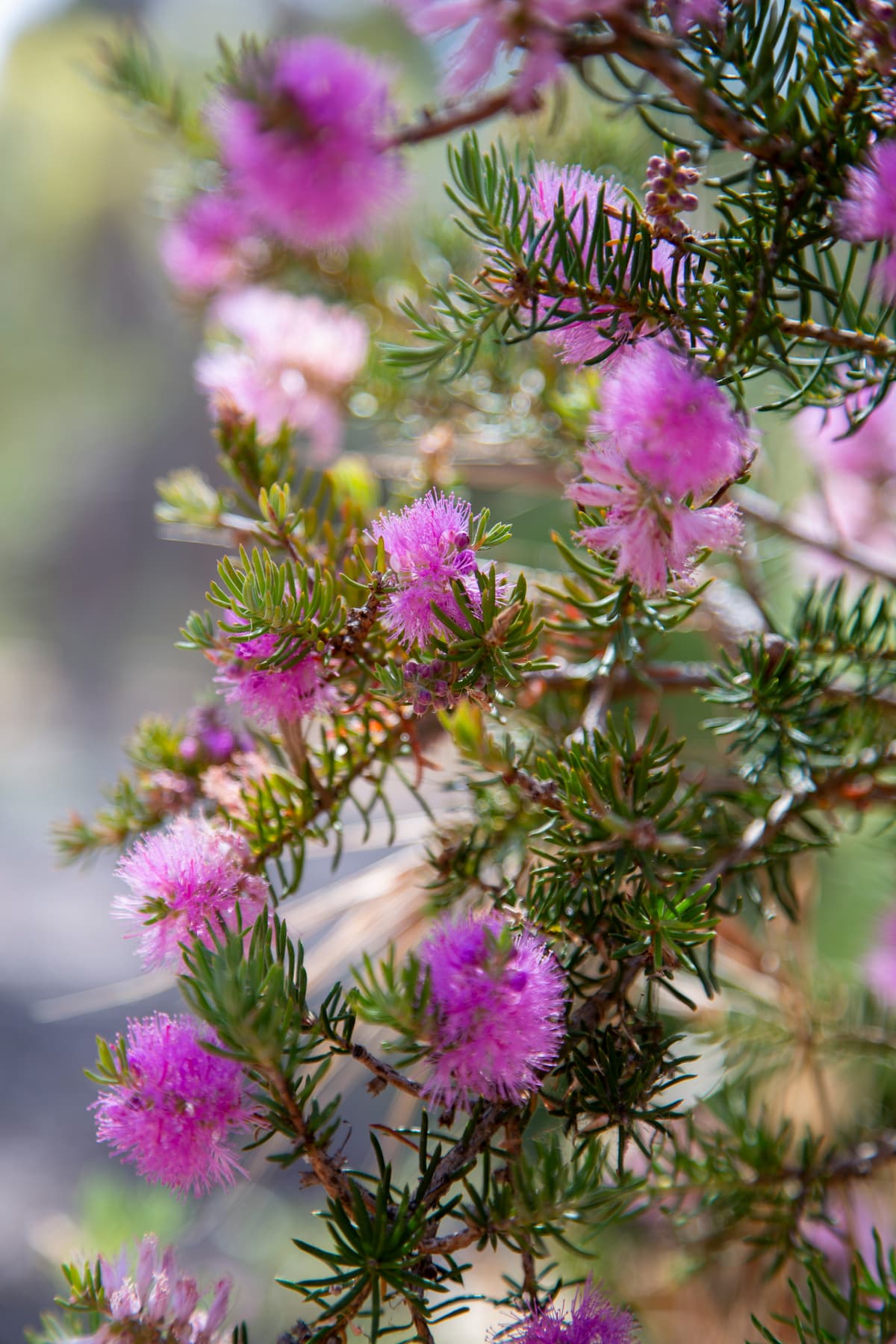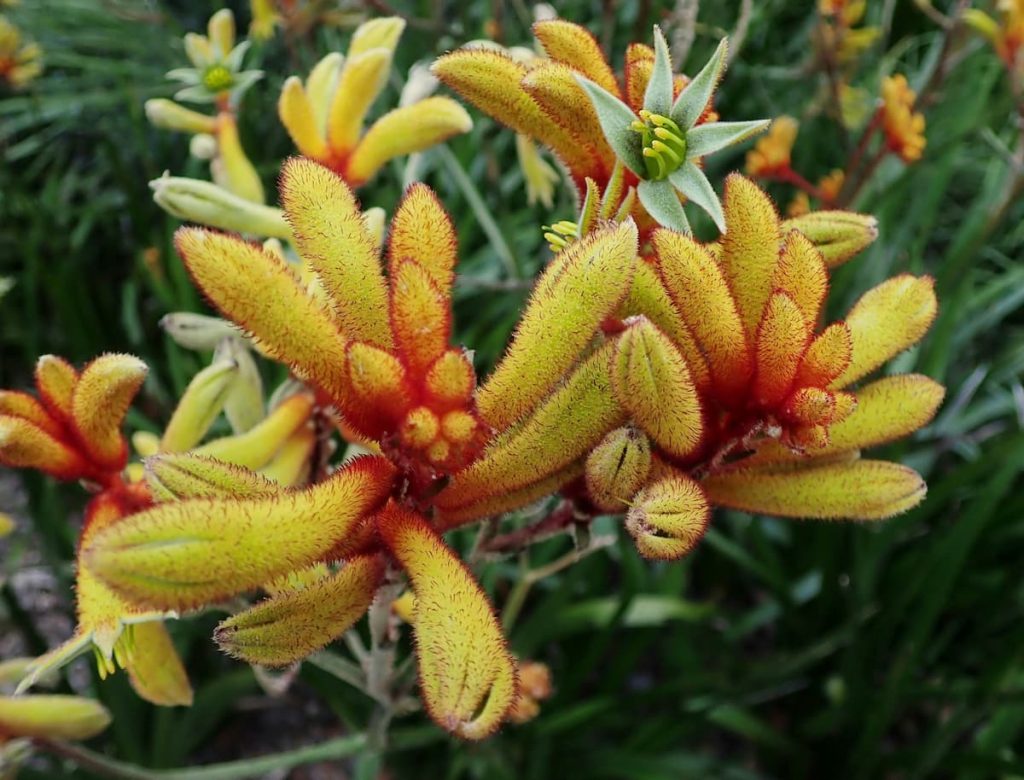Australian native plants have shed their reputation as scraggly bush plants, emerging as sophisticated choices for contemporary garden design. From architectural statements to cottage garden charm, natives offer endless possibilities for creating stunning outdoor spaces that connect with our unique landscape while supporting local wildlife.
Creating Drama with Architectural Plants
Nothing makes a bold statement quite like the sculptural form of a grass tree (Xanthorrhoea species). Position these ancient beauties as focal points where their dramatic silhouettes can shine – perhaps against a rendered wall or rising from a sea of low groundcovers. Pair them with the sword-like leaves of Gymea lilies (Doryanthes excelsa) for a truly prehistoric feel.
For smaller spaces, consider the architectural potential of native ferns. A tree fern (Dicksonia antarctica) transforms a shady corner into a lush retreat, while the birds nest fern (Asplenium australasicum) adds tropical glamour to protected positions. Mass plant smaller ferns like Blechnum species to create rivers of green texture through garden beds.
Cottage Garden Charm with Native Flowers
Who says cottage gardens need European plants? Create romantic, flower-filled borders using native alternatives that offer superior performance. Combine the soft pink blooms of Crowea saligna with the daisy-like flowers of native paper daisies (Xerochrysum species) and the delicate beauty of native violets (Viola hederacea) spilling over path edges.
Layer heights by backing borders with flowering shrubs like Phebalium woombye, whose masses of tiny star-like flowers create clouds of yellow or pink. Add movement with native grasses like Poa labillardieri, whose blue-grey foliage and delicate seed heads catch every breeze. Edge paths with compact forms of westringia or correa for year-round structure.
Contemporary Minimalism
Modern design calls for strong forms and restricted palettes – qualities natives deliver brilliantly. Create striking monochromatic gardens using silver-foliaged plants like Leucophyta brownii (cushion bush), various eremophilas, and Maireana sedifolia (pearl bluebush). These plants’ subtle tones provide sophisticated backdrops for contemporary architecture.
For green minimalism, mass plant single species for maximum impact. A grove of Allocasuarina verticillata (drooping sheoak) creates a ethereal screen, while sweeps of lomandra or dianella provide textural groundcover. In courtyard gardens, a single specimen of Angophora costata (smooth-barked apple) offers year-round interest with its salmon-pink bark and graceful form.
Wildlife-Friendly Design
Design gardens that welcome native fauna by creating layers of habitat. Combine nectar-rich grevilleas and callistemons with seed-producing grasses and dense shrubs for shelter. A simple design might feature a backdrop of larger shrubs like Banksia spinulosa, mid-layer plantings of compact grevilleas, and a groundcover of native violets or Scaevola – beautiful and functional.
Bringing It All Together
Successful native garden design balances aesthetic goals with practical considerations. Group plants with similar water needs, consider maintenance requirements, and always respect mature sizes. Whether you’re drawn to bold architectural statements, romantic cottage abundance, or sleek contemporary style, Australian natives provide the palette to realize your vision while creating gardens perfectly adapted to our climate and supportive of our unique biodiversity.


